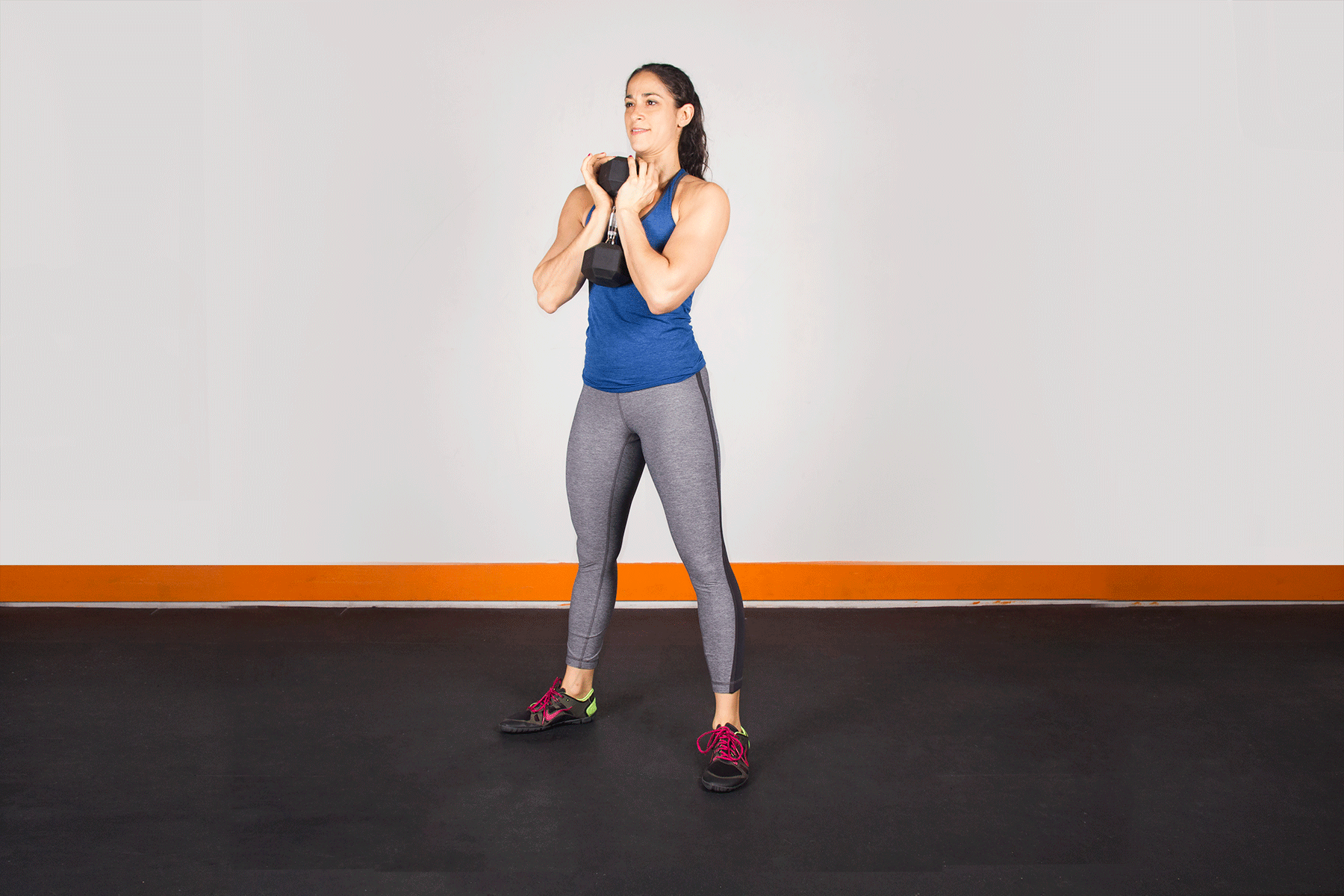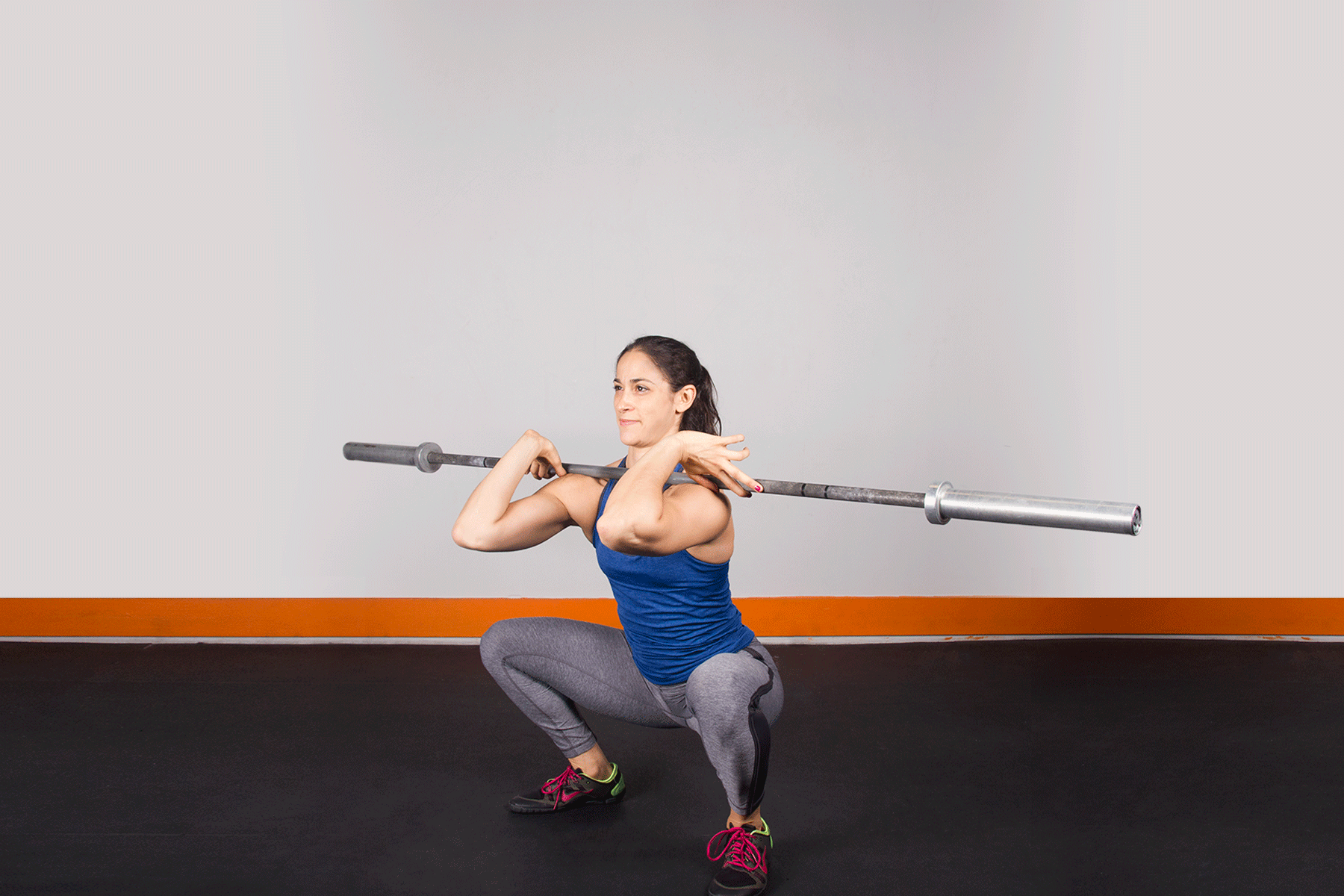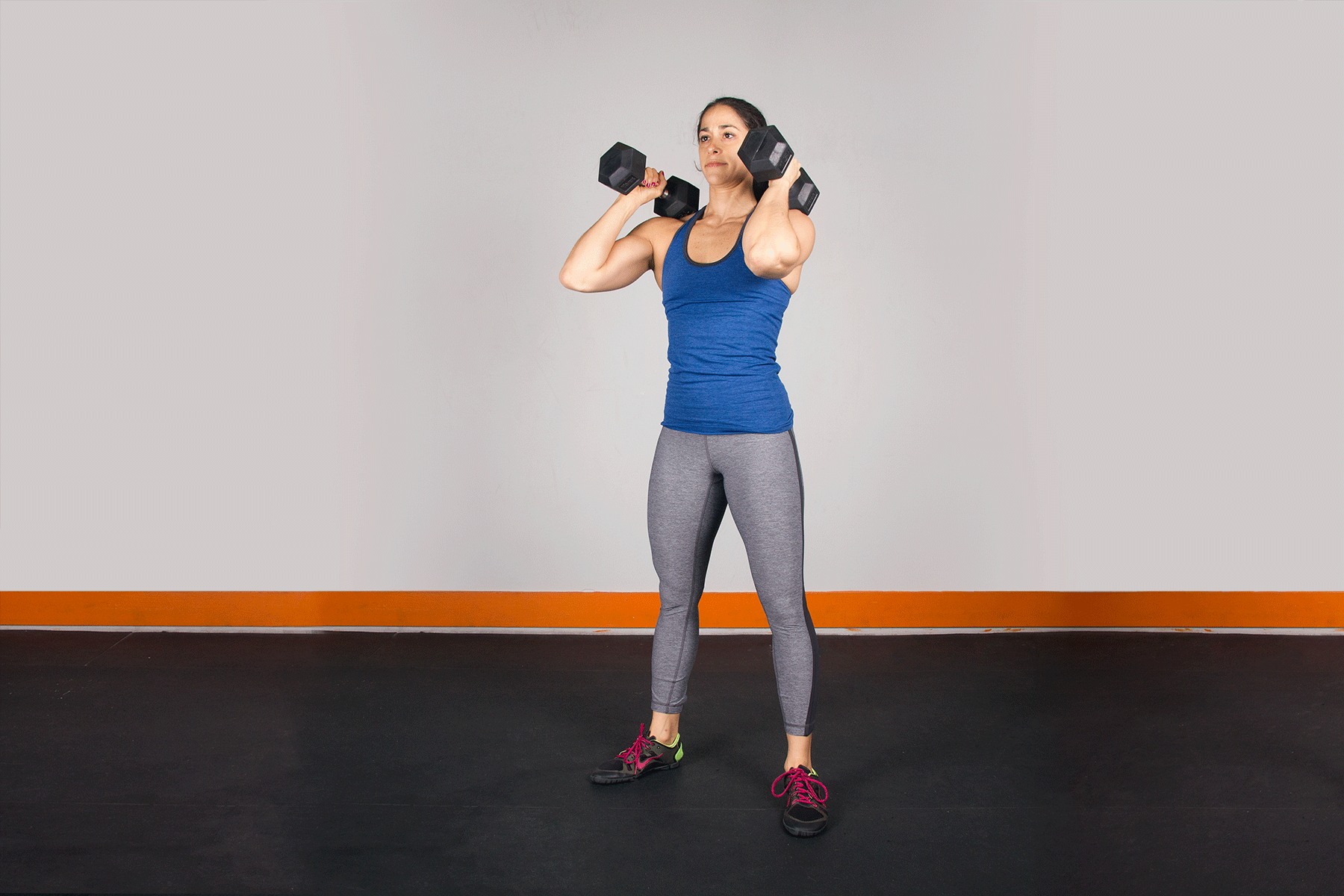If You Like It, You Should Put Some Weight On It
Beginners should start squatting with no added weight (bodyweight only!) and up the ante only after proper form is nailed down. (We don't all have to be like this guy.)
When using more weight, it's more difficult to squat deeper, and deep squats with less weight trump shallow ones with heavy weight when it comes to making us stronger. While there are many ways to squat, three of the most common weighted variations are goblet, back, and front squats.
Goblet Squat
This squat (sadly) does not include a goblet full of wine (though we've found no studies disproving the effectiveness). Instead, hold a kettlebell, dumbbell, or medicine ball at the sternum (center of the chest).
With a slight bend in the knees, drop into a squat, going straight down and then standing straight up (do not reach back with the butt as you would for a bodyweight squat).
When performing a goblet squat, drop the elbows between the legs inside the knees for a full range of motion. Goblet squats are great for beginners (and also experienced lifters) since they keep us from leaning forward (holding weight in front of the chest makes for a stable position).

Back Squat
Squats are much more challenging with a barbell, so if it's your first time, it's best to ask for a trainer's guidance.
For back squats, the weight rests on the traps (in one of two positions: low or high), where it's generally easier to squat a heavier load. Hands should be facing forward, along the same plane as the shoulders, with elbows pointing down to the ground (arms will form a "W" along the bar).
Keep hips back, and follow the same form for a bodyweight squat (ya know, minus holding your arms out of course!).
The back squat is different from the bodyweight squat in one important way: breathing. When you're squatting a barbell, inhale before you descend, hold your breath for the squat, and exhale only once you've returned to standing.
Front Squat
The front squat requires getting comfortable with the front rack position.
When front-squatting with a barbell, this means resting the barbell just above the clavicles, right on the neck (the ends of the bar will rest on the shoulders if they're wide enough) and laying on the fingertips, with elbows up and pointed out and triceps parallel to the ground.
While it may seem unstable to hold the bar with just the fingertips, the collarbone is a solid shelf for the bar, so the hands are only needed to prevent the bar from rolling. As long as the elbows stay up, extending straight out from the shoulders, the bar will be secure. For the descent in a front squat, the body will stay signifcantly more upright than it would in a bodyweight or back squat.
Do not reach back with the butt (as you would with a back or bodyweight squat), as this will angle the body forward, making it difficult to stand the weight up. A great way to maintain an upright position is to think about keeping the elbows up and pointing forward throughout the movement.
More from Greatist: 22 Kick-Ass Kettlebell Exercises

The front squat can also be done with dumbbells. With one in each hand (palms facing in), rest a dumbbell lightly on each shoulder. Execute the squat, keeping the triceps raised and elbows up and pointed out.




